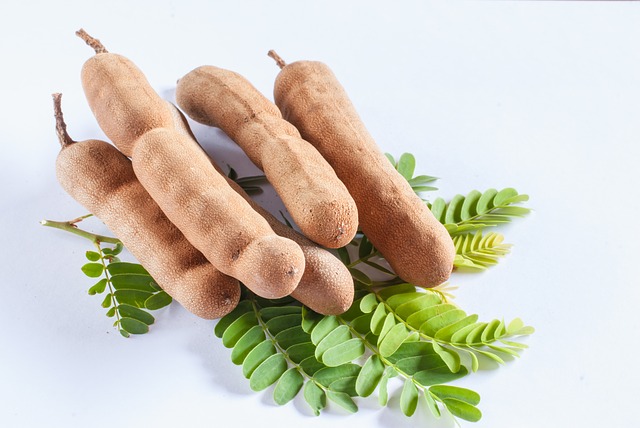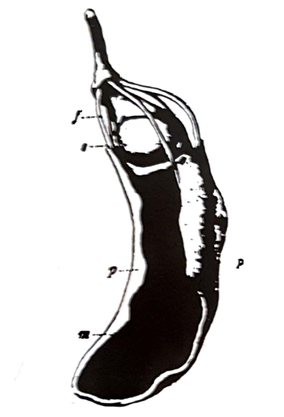Tamarind
Synonyms
Tamarindus, Tamarind Pulp, Fructus Tamarindi
Botanical Source of Tamarind
Tamarind consists of the ripe fruits of the ripe fruits of Tamarindus indica Linn., freed from the brittle outer part of pericarp and preserved with sugar. The plant is a tree of the pericarp and preserved with sugar. The plant is a tree of the family Papilionaceae.
Geographical Source
Tamarindus indica is indigenous to tropical Africa and is cultivated throughout India, Bangladesh, and West Indies.

Macroscopical and Microscopical Characters of Tamarind
The intact fruit is an oblong pod-shaped curved legume with a short stalk, 5 to 20 cm long and about 2 cm broad. The epicarp is brownish in colour, rough, hard and brittle. The mesocarp is pulpy, juicy and acid through which run from the stalk about 5 to 9 stout, branching vascular stands. The endocarp is leathery and forms a series of one-seeded chambers around the three to six seeds. The drug is prepared by removing the epicarp; thus the drug principally consists of the p pulp although the fibrovascular strands and the seeds are contained in it. The seeds are reddish brown in colour, flattened and almost quadrangular, about 15 mm long, 12 mm wide and 4 to 6 mm thick. The brown testa is hard, wrinkled & glossy, marked with a large patch of areole on each surface. The embryo under the thick testa exhibits two very large cotyledons, composed of hemicellulose, which stains blue with iodine. Endosperm is narrow.
 Fig. 3S: Tamarind, a fruit patch of areole on each surface. The embryo under the thick testa exhibits two very large cotyledons, composed of hemicellulose, which stains blue with iodine. Endosperm is narrow. (with pan of pericarp removed) f, fibres; m, pulp; p, epicarp; s, seed (Adopted from Wallis)
Fig. 3S: Tamarind, a fruit patch of areole on each surface. The embryo under the thick testa exhibits two very large cotyledons, composed of hemicellulose, which stains blue with iodine. Endosperm is narrow. (with pan of pericarp removed) f, fibres; m, pulp; p, epicarp; s, seed (Adopted from Wallis)
Chemical constituents
The pulp of Tamarind contains about 10 percent of tartaric, citric and malic acids, and their potassium acid tartrate salts. The pulp also contains a little nicotinic acid and about 30 to 40 percent of invert sugar.
Uses of Tamarind
Tamarind is an acidic refrigerant, useful in fevers. It reduces cholesterol level in blood on prolonged use and acts as a gentle laxative.

